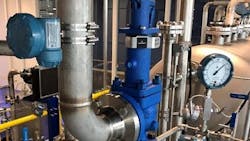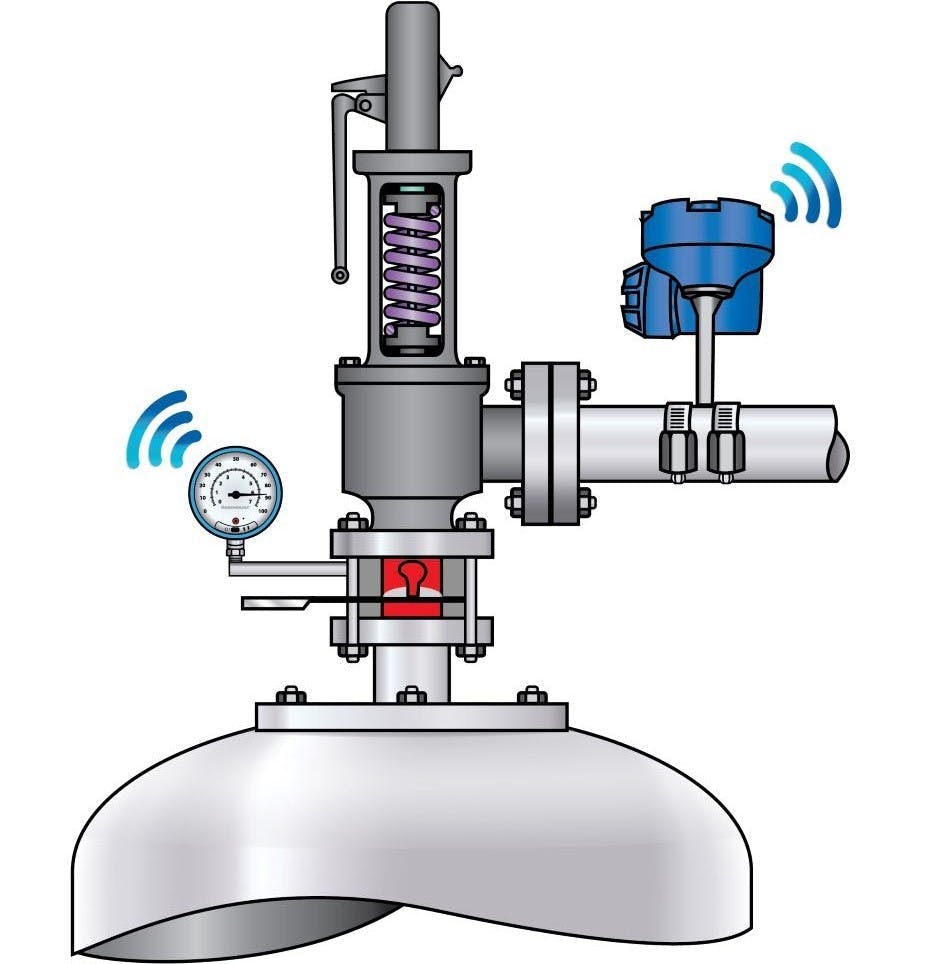Overcoming safety, sustainability, reliability, productivity challenges
Why this article is important
- The article explains how PRVs prevent overpressure incidents in critical process equipment.
- It explores external monitoring solutions (e.g., acoustic sensors) and how they enable real-time detection, reducing risks and improving regulatory compliance.
- It shares how continuous PRV monitoring helps detect leaks and quantify emissions.
- It provides insights into how PRV events indicate process inefficiencies and equipment issues.
Process manufacturers face many challenges in the areas of safety, sustainability, reliability and productivity. In this column, we'll examine how pressure relief valves (PRV), a seemingly simple but in fact sophisticated device, can help improve performance in all these areas.
Safety: a non-negotiable priority
Over the past few decades, emphasis on safety increased due to regulations, insurance, public perception and recruiting. Consequently, protecting personnel, equipment and the environment has never been more important.
Regulatory pressures may ebb and flow, but they’re increasing and will continue to do so. Similarly, insurance rates and public scrutiny only seem to grow. Meanwhile, personnel are increasingly difficult to recruit and retain, and a safe workspace is critical to ensuring retention. Finally, equipment and construction costs increased over the past few years, so avoiding safety incidents that cause material damage is more important than ever.
PRVs prevent safety incidents from occurring in all types of pressure vessels, boilers, reactors and other process equipment. In the past, these devices opened at setpoint to release pressure to the atmosphere. Once pressure dropped, they simply opened a closed position, ready to activate when another overpressure event occurred. There was no direct indication of opening or closing, so operators had to determine activation indirectly.
Manual inspection rounds are an option, but these activities often require plant personnel to enter hazardous areas or access valves in hard-to-reach locations. Adding an external monitoring device that won’t interfere with the PRV’s ability to open is a better approach. Acoustic monitoring devices supporting wired and wireless protocols (Figure 1) are now available and designed to mount directly on pipes adjacent to PRVs.
These devices can detect PRV events in real-time, and analytics can correlate process data with maintenance records to determine root causes. Immediate notification via wireless communication with a host system keeps workers safe and ensures regulatory compliance.
Sustainability: going beyond compliance
Sustainability has also increased in importance, moving from an afterthought to a necessity as public demand for more environmentally conscious practices increases.
Releases and leaks from PRVs open to atmosphere can lead to fines, lawsuits and extra work to identify the source of each release. Even small leaks can generate large amounts of volatile organic compounds (VOC), depending on concentrations and pressures.
As with safety, PRVs can play a vital role in improving sustainability, but only if their operation is continuously monitored to detect releases. The type of monitoring can detect release events, report duration and severity, and quantify the amount of emissions. This information empowers plant personnel to quickly identify issues, and repair or replace defective devices.
Reliability: foundation of operational excellence
Reliability is particularly important in industries facing intense global competition. Downtime can be costly, not just in terms of lost production, but also due to unplanned maintenance. This increases the drive for maximum uptime with minimal operating expenditures, and the need to detect minor issues before they develop into serious incidents.
A PRV release isn't a regular event, so each occurrence should be logged for further investigation. If a PRV opens frequently, that’s a strong indication of a process problem that deserves more attention, or it indicates a valve wasn’t properly specified for the application. In either case, it should be treated as an important alert.
“PRVs prevent safety incidents from occurring in all types of pressure vessels, boilers, reactors and other process equipment.”
Once again, PRVs play a crucial role because they can warn of impending issues with their own operation, as well as with the equipment they’re designed to protect. Unmonitored PRVs simply operate as designed until they fail, so it’s often difficult to detect even complete failures.
By contrast, monitoring also reveals if a valve is leaking or simmering, and alerts for unwanted behaviors, such as cycling or chattering. With real-time information about each release, correlating relief events with process data becomes possible, helping to detect issues with equipment to which the PRV is affixed.
Relief events can be correlated with historical records and maintenance data. Process manufacturers can perform in-depth, accurate, root-cause failure analyses, not only for the valves, but also for the process.
Productivity: automation meets efficiency
There are two aspects of plant productivity: personnel and production. The drive to increase manufacturing productivity amplified as difficulties in hiring and retaining staff grew. However, process manufacturers can work with suppliers to increase automation, multiplying the efforts of their staff. The demand for increased productivity is growing due to heightened, worldwide competition.
PRV monitoring can address both of these issues. By removing the need for manual rounds to inspect valves, these systems free up personnel to focus on higher-value tasks, such as supervising numerous sites from a control center. Software applications are available to speed up and simplify these monitoring activities.
Automated PRV monitoring also increases manufacturing productivity by providing early warnings of impending issues in the devices themselves, as well as in external equipment. This facilitates proactive and planned maintenance, rather than reactive upkeep, eliminating extra costs and downtime that accompany the latter.
Get your subscription to Control's tri-weekly newsletter.
Ongoing advances
In addition to monitoring, instantaneous, bellows-leak detection is a critical safety feature designed to immediately identify and alert operators to leaks occurring in the bellows of PRVs. Bellows are integral to isolating a valve's internal components from external factors, such as process backpressure, which can influence the PRV’s setpoint and performance. Over time, bellows can deteriorate due to mechanical stress, corrosion, metal fatigue or exposure to harsh process environments. This deterioration leads to leaks, compromising the effectiveness of the valve and introducing several safety hazards.
Service records from 30,000 valves in multiple applications and industries show that 2-6 % of all PRV bellows are damaged and potentially emitting process media to the atmosphere. Incorporating instantaneous, bellows-leak detection into PRVs is a proactive safety measure that mitigates risks associated with bellows failure to ensure operational reliability, environmental protection and compliance with safety standards.
These advances will persist as automation suppliers continue to innovate, a task that Emerson takes very seriously. Combined with monitoring systems, modern PRVs help process manufacturers increase safety, sustainability, reliability and productivity.
About the Author

Peter Mathew
Emerson
Peter Mathew is the vice president for Emerson’s Pressure Relief Valves business unit. He has more than 15 years of relevant industry experience in general management, operations, sales, and marketing.


